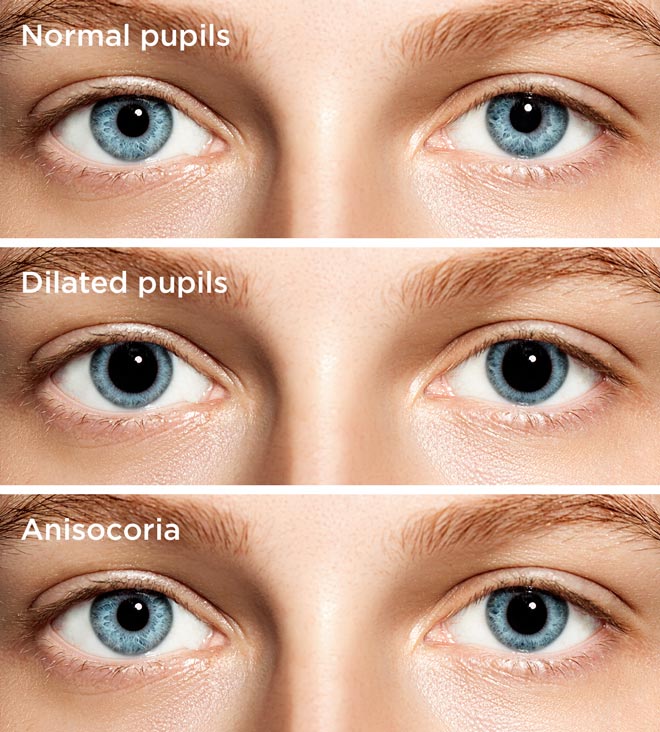

Pupillary constriction is produced by the parasympathetic system with the neurotransmitter acetylcholine to activate the sphincter muscle of the iris, whereas pupillary dilation is produced by the sympathetic system with the neurotransmitter norepinephrine to activate the dilator muscle of the iris. The pupillary system is controlled by the parasympathetic and sympathetic systems per the autonomic nervous system ( Kardon, 2003 Adoni & McNeet, 2007). It is the last aspect that will be considered for further discussion. Reduction in its diameter: (1) minimizes the adverse effects of the eye’s inherent optical aberrations on the quality of the retinal image, (2) assists in the process of ocular accommodation by increasing the eye’s depth-of-focus to minimize the amount of accommodation necessary to attain high-quality, focused retinal imagery, and (3) decreases the amount of light entering the eye to assist in visual comfort, that is the pupillary light reflex (PLR). It serves three functions (Ciuffreda, 2006 Kardon, 2003). The pupil of the eye is approximately circular in shape and is defined anatomically by an aperture centered in the colored iris. In this review, the focus will be on the last two systems, including both the static (i.e., steady-state) and dynamic (i.e., transient) aspects, and along with their basic science and clinical implications. With regard to the oculomotor system, a treasure trove of abnormalities has been uncovered within the near triad and its response synkinesis: vergence, accommodation, and the pupil ( Suchoff et al., 2001 Greenwald et al., 2012 Ciuffreda et al., 2021). More specifically, the diagnosis of C/mTBI produced a constellation of vision problems of a sensory (e.g., reduced contrast sensitivity), motor (e.g., slowed vergence), and/or perceptual (e.g., impaired figure-ground discrimination) nature ( Suchoff et al., 2001 Suter & Harvey, 2011). The related medical problems presented in these individuals having C/mTBI cut across the spectrum: sensory, motor, perceptual, cognitive, language, attentional, physical, physiological, and/or behavioral ( Zasler et al., 2021). Buffalo Concussion Physical Examination (BCPE): This test is a modified physical examination that assesses neck tenderness and range of motion, head, jaw, and face abnormalities, eye movements, eye examination, and coordination.The area of concussion/mild traumatic brain injury (C/mTBI) came to the world forefront with convergence of two events: the Iraq/Afghanistan wars and the sports concussion “epidemic” (Ciuffreda et al., 2016 Ciuffreda et al., 2021).An off-field assessment of symptoms involves cognitive, neurological, balance, and delayed recall evaluation. Sport Concussion Assessment Tool (SCAT): This test includes an on-field assessment noting red flags or signs of a concussion, memory assessment using Maddocks questions (a short list of specified questions), Glasgow Coma Scale (GCS), and cervical spine assessment.Post-concussion symptom scale: This concussion test includes 18 questions that involve neurocognitive factors (examples include difficulty concentrating or difficulty remembering), physical symptoms (examples include headaches and dizziness), and emotional symptoms (examples include sadness or irritability).King-Devick concussion test: This two-minute test can be done on the sidelines after a sports injury or at a later time, and it is an assessment of language, eye movement, and attention.It is an evaluation of orientation, immediate memory, neurologic function, concentration, and delayed recall. Standardized Assessment of Concussion (SAC): This five-minute test can be done on the field sidelines after a sports injury or later.You might be asked to retake the test for comparison if you have experienced a TBI. Baseline and post-injury tests: Many schools and sports leagues administer preseason skill measurements that can include memory tests or tests of speed and accuracy, either in an interview format or with computer testing.

These tests may include questions about your symptoms and they are often used as self-tests, but they are not intended to replace an evaluation by a qualified medical professional. Online checklists: A number of different online checklists are available for concussion screening.


 0 kommentar(er)
0 kommentar(er)
